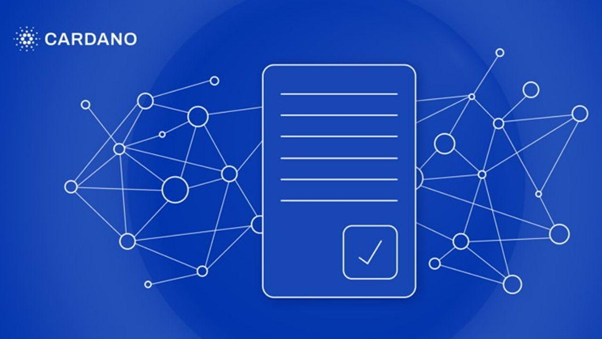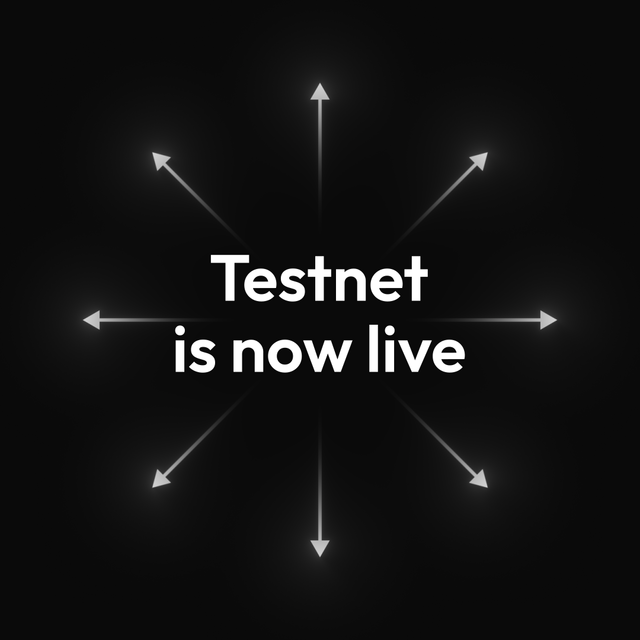The Future of Cardano DeFi with eUTxO Model
Want to understand why Cardano does nothing like any other blockchain? Know how their "extended" accounting model works to better understand Defi projects on Cardano? For some, this insider language requires being a developer or having an above-average IQ....

Want to understand why Cardano does nothing like any other blockchain? Know how their "extended" accounting model works to better understand Defi projects on Cardano?
For some, this insider language requires being a developer or having an above-average IQ. However, IOHK (founder of Cardano blockchain) has thought of you by documenting every aspect of its project and its blockchain.
With experience, we now know the ins and outs of this future blockchain and its ecosystem. This can be difficult to understand for beginners and even the most experienced. We will therefore popularize for you all the aspects that allow its proper functioning with the Defi.
By the end of this article, you will have learned:
- What is a UTxO or eUTxO model
- How UTxOs evolve on the blockchain
- Why Cardano thinks this is the best accounting model
- The importance of this model for using Cardano's Defi
Let us dive into this world full of crypto-currencies and unspent transactions without delay!
eUTxO: The UTxO extended accounting model used by Cardano
In its philosophy, Cardano is resolutely innovative and aims to remove as many barriers as possible for blockchain-based projects. At the heart of Cardano's operation, the eUTxO is a perfect example: it promises to solve the problems linked to the standards underlying the two biggest cryptocurrencies today, Bitcoin and Ethereum.
UTxO: Unspent Transaction Output
The UTxO model underlies a number of blockchains in the crypto world, such as Bitcoin, Litecoin, Dogecoin, and Cardano. UTxO is as simple as it is powerful. With UTxO, the amount of money in a user's wallet represents the sum of transactions received (input) and spent (output) and not a simple "amount" written as is in a file.
An unspent output is therefore the result of a transaction that a user receives and can spend in the future, hence the name "unspent". This is one of the main differences with Ethereum, whose blockchain is based on "accounts", similar in spirit to those available at a traditional bank.
To better understand, we can represent the UTxO model as an "emulation" of a classic wallet containing bills and coins. For example, in order for Alice to have $127 in her wallet, she needs several bills and coins, because there is no $127 bill.
Each of these "tokens" can be interpreted as an unspent transaction, hence the term "unspent". The sum of all the contents of her wallet is the total amount of money Alice has. If she buys a sundae for $8, she is likely to give the seller a $10 bill, and the seller will give her $2 in change.
The UTxO model works in an analogous way. Let us say Alice has 100 ADA in her wallet. The 100 ADA in her wallet is represented as unspent output (in red) waiting to be spent by input (in blue).
Wishing to pay 10 ADA to Bob who already has 50 ADA, the new transaction (Tx1) will come to use Alice's unspent output containing the 100 ADA with new input and tell the blockchain to "give her change" in the form of a new unspent output of 90 ADA representing the new amount inside Alice's current wallet. At the same time, a new unspent output from the same transaction was created representing the 10 ADA that Bob received.
The UTxO model is very well suited to Bitcoin whose sole purpose is to exchange tokens.
Accounting difference between Ethereum and Cardano
The accounting model on which Ethereum is based is fundamentally different. Here, no coins or banknotes, Alice's Ethereum wallet is more like a bank account on which the number of Ethereum owned is recorded. A transaction consists then in subtracting a part of this amount and adding it to the recipient's wallet. This means that for a transaction to take place in the Ethereum blockchain, a set of instructions must be executed, which vulgarly looks like this.
"Take 0.4 ETH in address 0x9krUh… and add to address 0xfGFje..."
For this reason, before a transaction can be confirmed, checks must be made on the blockchain to avoid the double-spending phenomenon of creating a token out of thin air, adding Ethereum to a wallet without having withdrawn any elsewhere. Therefore, gas fees can be relatively high on the Ethereum blockchain.
Compared to the accounting model, UTxO has the advantage of self-auditing transactions. Indeed, since the input is systematically equal to the output, it is not necessary to proceed to any verification, and the gas fees are reduced.

eUTxO: Extended Unspent Transaction Output
There is, however, an advantage to Ethereum's account balance model: Since it is natively composed of instruction sets, it allows the creation and use of smart contracts. Unlike Bitcoin, which is "just" a cryptocurrency, Ethereum is a decentralized platform that executes smart contracts.
These contracts run on the "Ethereum virtual machine", a distributed computing network composed of all devices running Ethereum nodes. They are called smart contracts because they can be executed when certain conditions are met. For example, a blockchain-based online music streaming system could contain smart contracts that would release access to music content once a certain amount of money is paid.
This flexibility inherent in the Ethereum model is foreign to Bitcoin's UTxO. That is why Cardano is introducing eUTxO, the elegant marriage between the simplicity and efficiency of UTxO and the possibilities of virtually the account balance model.
In eUTxO, the "e" stands for "extended". The eUTxO model is based on UTxO and integrates the possibility to create smart contracts and thus decentralized applications (Dapps). Thanks to Cardano, storing data on the blockchain, not only sums of tokens is possible.
Concretely, eUTxO allows adding conditions to the triggering of a transaction, as the Ethereum account balance model allows while keeping the benefits of UTxO. With eUtxO, when a node commits a transaction, it determines whether the transaction is allowed to use a certain output as input. The transaction will look for the script provided by the output address and execute the script if the conditions are met.
What are "concurrency issues" for Cardano?
With the arrival of smart contracts on Cardano, "concurrency issues" appeared. This is due to the structure of the Cardano blockchain which differs from that of Ethereum. To illustrate the problem, SundaeSwap offers us an interesting metaphor:
"To better understand, let us use an analogy: chefs in a restaurant. A single skilled chef can work on several dishes at once, switching from one to another at the right time. This chef is highly competitive. Multiple chefs can each work on different dishes at their own workstations. These chefs are highly parallel. However, in a well-run kitchen, many chefs can work together on many dishes, and be both competitive and parallel. If they start to clash with each other when looking for a common ingredient, they are suddenly in a conflict situation."
This is somewhat the case because the eUTxO model underlying Cardano is better in parallelism than in competition. On the other hand, this is by no means fatal for Cardano. These problems can be easily circumvented. It is true that protocols that give multiple people access to the same UTXO can run into contention problems, but multiple UTXOs can be governed by the same smart contract.
SundaeSwap also reminds us that it is essentially a change of mindset from Ethereum. In the latter, you use a smart contract to make it do something, and with Cardano, you lock the outputs with a contract, which determines when they can be spent afterward. So, you must think about applications in a different way and not necessarily apply the principles that govern the Ethereum world.
The technical functioning of UTxOs on the Cardano Blockchain
The blockchain contains and stores the UTxOs created during each transaction. Once a UTxO is spent, one (or more) new UTxO is created. The new UTxOs are created and sent to the appropriate wallet(s). To illustrate this, let us look at a transaction for a moment.
In a transaction, the "From" field has two UTxOs which are the inputs. These lead to the two output addresses. One of the output addresses is the recipient's address and the other is the "exchange address", where the remaining ADA from the input addresses goes back into the sender’s wallet.
When creating one or more UTxOs, the rule we mentioned earlier, which obliges input and output to be equal, prevents another problem from emerging: double-spending. This is characterized by "creating" a token from nothing by including in the output of a transaction a sum of tokens greater than the sum of the inputs. This is simply impossible in a blockchain based on the UTxO model.
And since the entire transaction history is always kept, it is possible at any time to go back in time and check the history of a wallet from the beginning by analyzing all the UTxOs. When the sum of input and output does not match, a UTxO error appears, and the transaction cannot be completed.
The management of the different eUTxOs by Cardano Defi
The Cardano blockchain is destined to become a staple in the development of Dapps and smart contracts. Developed by a strong team involving not only developers but also scientists and engineers from all over the world, some say Cardano could well surpass Ethereum, thanks to its increased efficiency.
What makes Cardano so special?
Cardano somehow brings together the best of both worlds between Bitcoin and Ethereum. It used the UTxO model of Bitcoin while adding the possibility of creating and using smart contracts and therefore of developing the infinite possibilities around its blockchain.
In doing so, it solves both the problem related to the "rigidity" of Bitcoin's UTxO model, which only allows the manipulation of tokens and the problem related to Ethereum's accounting model, which requires high gas fees. In addition, Cardano has an integrated smart contract platform (Plutus) as well as a programming language called Plutus Core to develop applications.
The integration of Hydra to propel Cardano to the Moon!
Of course, Cardano is scalable, and Hydra's current implementation will make it even better. Currently, Cardano is capable of reaching 1000 TPS (transactions per second). The implementation of Hydra, a layer two scaling solution, will enable fast processing of off-chain payments and smart contracts.
In concrete terms, each pool can produce a new Hydra head. Therefore, adding more pools increases scalability as each Hydra head can process 1000 TPS. With 1000 pools, Cardano could easily process one million transactions per second, making it extremely fast.
Cardano’s native Token
Another key difference between Cardano and Ethereum is native tokens. Where Ethereum requires custom code for user-defined tokens to be supported by the chain, Cardano supports them natively. This results in less expensive transactions on the one hand and limits human error that can lead to financial losses on the other.
Native tokens function as an accounting system defined in the ledger and allow token transactions (tracking, sending, and receiving) without additional programming. In short, native tokens remove the unnecessary layer of costly complexity and inherent inefficiency found in the Ethereum chain. This makes it easier to create projects around the Cardano ecosystem.
Thousands of assets already based on Cardano
Proof of the quality of its ecosystem, there are already nearly 5,000 assets surfing on the Cardano blockchain. You can easily find them here at cardano tokens list.
Delegate Your Voting Power to FEED DRep in Cardano Governance.
DRep ID: drep12ukt4ctzmtf6l5rj76cddgf3dvuy0lfz7uky08jfvgr9ugaapz4 | We are driven to register as a DRep by our deep dedication to the Cardano ecosystem and our aspiration to take an active role in its development, ensuring that its progress stays true to the principles of decentralization, security, and community empowerment.DELEGATE VOTING POWER!








